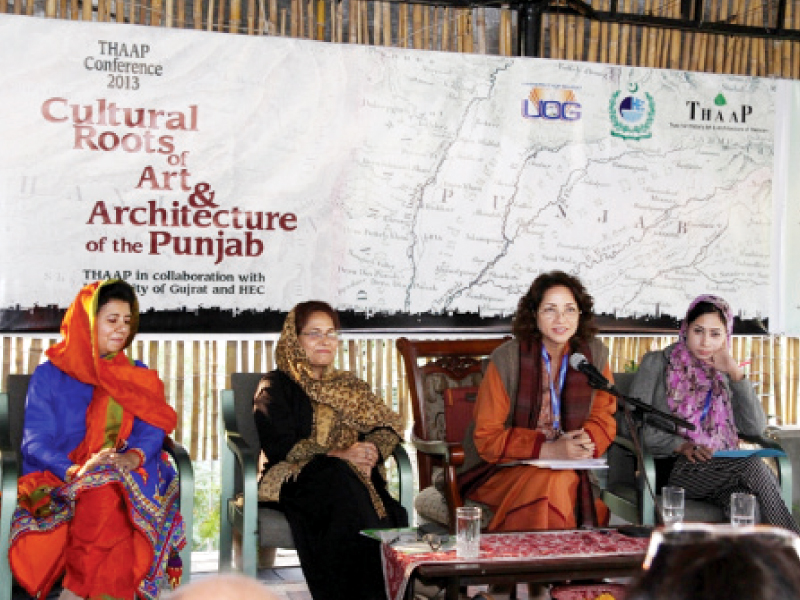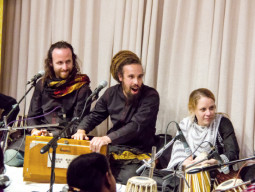
“Heer is not just a character, it is a movement…we must understand our roots before exploring western feminism,” said Fakhra Hassan. She was reading her research paper, The Intellectual Revival of Punjabi Feminism, at the third session of the THAAP Conference on Cultural Roots of Art and Architecture on Friday.
Hassan said the youth should read Punjabi literature and revisit the masters who had inspired many foreign writers.
“Heer Waris Shah was based on real people with actual values…we must understand them,” she said.
Biographer Rajmahon Gandhi said Punjabi was one of the most concise languages in the world. “It is the language of the soil,” he said.
In his concluding remarks, Dr Ishtiaq Ahmed, a professor at Lahore University of Management Sciences said Punjabi was once spoken at homes. “Parents don’t converse with their children in Punjabi any longer…this is unfortunate.”
He said the country’s ruling elite had disowned the language of the largest ethnic group. “I believe the Punjabi bureaucracy is responsible for this. They have abandoned it,” he added.

Sadia Kamran Pasha, a visiting teacher at Kinnaird College for Women and Beaconhouse National University presented paper titled Tracing the Development of Bahawalpuri Kundan. She said the exact origins of the kundankari technique were not known.
“It is reported to have been in practice for centuries, with little variation, in western Asian civilisations and in South Asia.”
“The techniques, the forms and designs, the motifs and their symbolic values in kundan jewellery speak of the ancient cultural, economic and social ties between these civilisations,” she said.
Pasha said her study traced the roots of Bahawalpuri kundan technique and jewellery. She said it also recorded different phases of its growth as well as the technical variations since the Mughal era. “The difference between the original or pakka kundan and the contemporary thappa kundan is also recorded.”
The third session was presided over by Nadhra Shahbaz Naeem Khan from LUMS. It concluded with an art exhibition at 39-K titled Drawing From the Land.
Talking to The Express Tribune, Abdullah Qureshi, one of the curators at the gallery, said Drawing From the Land was a visual response to the fourth International THAAP conference.
Qureshi said the topic was Cultural Roots of Art and Architecture in the Punjab. For this, he said, an open call was sent out. “We received 31 applications in all forms and disciplines…this made the selection even more difficult,” he said.
Rakhshanda Atawar, another curator, said, “Through our selection we wanted to highlight the diverse engagement of artistic material that came forward.”
She said she hoped that a deeper connection could be formed between visual artists, researchers and scholars through the initiative. The participating artists are Rabia Ajaz, Habib Akram, Mehri Imani, Julius John, Fazal Rizvi, Jeeti Singh, Rabbania Shirjeel and Imrana Tanveer.
Published in The Express Tribune, December 7th, 2013.



















1714034954-0/WhatsApp-Image-2024-04-25-at-1-48-04-PM-(1)1714034954-0-270x192.webp)


















COMMENTS
Comments are moderated and generally will be posted if they are on-topic and not abusive.
For more information, please see our Comments FAQ